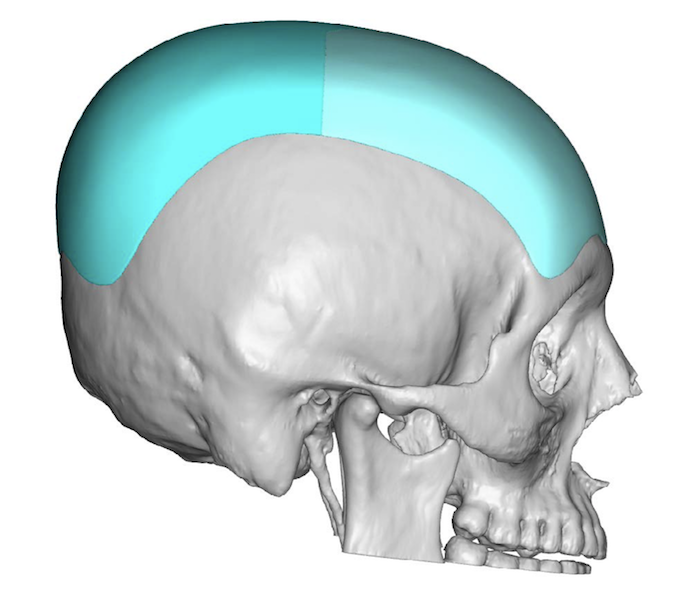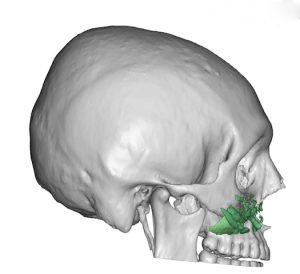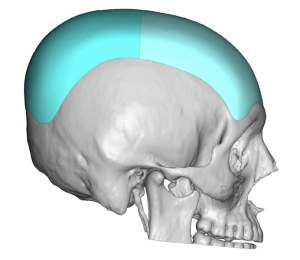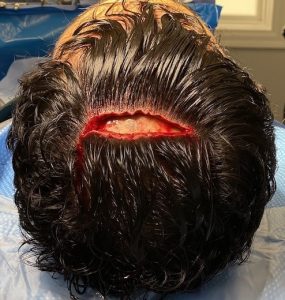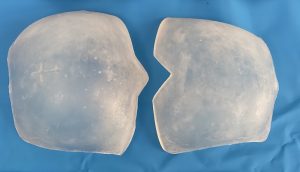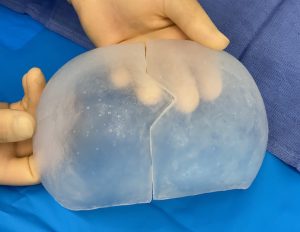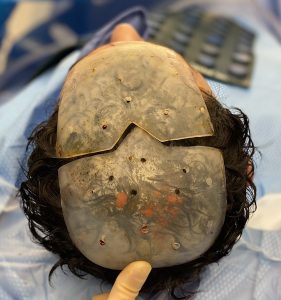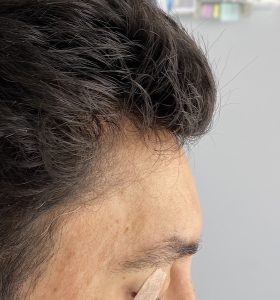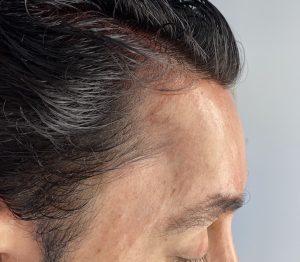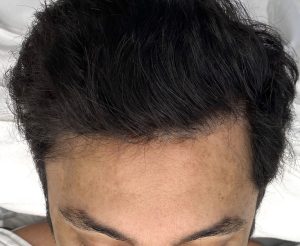Background: Forehead augmentation has been done by numerous techniques over the years. Historically it has been most commonly done by bone cements but has largely been replaced today by custom forehead implant designs. Establishing the exact dimensions needed and in a smooth fashion from top to bottom and from side to side is most accurately done by a preoperative design process. The forehead may look like a non-descript and easy surface area to create but occupying the entire upper third of the face and being completely exposed creates an unforgiving aesthetic feature of any irregularities or asymmetries.
A custom forehead implant also offers one often overlooked advantage…the ability to surgically place it through a fairly small scalp incision. This is most manifest in silicone implants because the elastic deformation properties allow them to be folded for insertion, keeping the scalp incision as small as possible. This becomes less true when very stiff and inelastic materials are used. While many get caught up in the perceived need to have an implant material that feels just like bone (when not on bone), this is actually irrelevant as what really counts is what it feels like when it is placed on bone.
Once feature of forehead augmentation that is often overlooked is the need to carry its superior edge further back onto the skull to avoid a sharp and palpable transition. Most foreheads that have an excessive backward slope by definition also have some deficiency on top of the skull as well. The more the backward slope of the forehead becomes the more top of the skull augmentation that is needed to completely correct it. It is possible to augment the entire skull along with the forehead if needed provided the volume of such a large surface area skull implant does not exceed the ability of the scalp to safely expand over it.
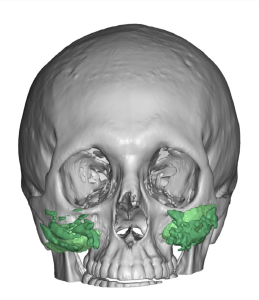
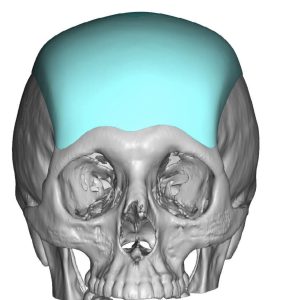
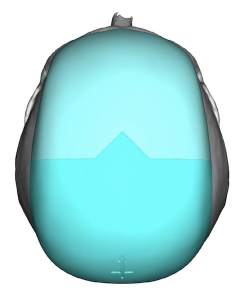
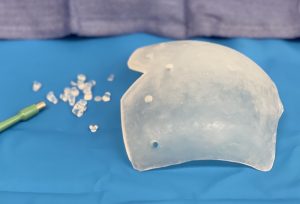
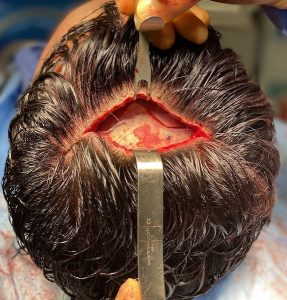
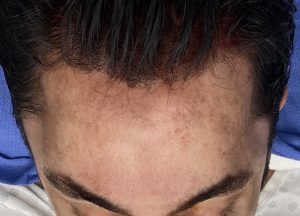
Case Highlights:
1) Forehead augmentation is most effectively done with a custom implant approach as all of the augmentation dimensions can be preoperatively selected.
2) In most forehead implant augmentations the effect most go further back onto the top of the skull for a smooth and non-palpable transition.
3) Provided the volume is not excessive the skull augmentation can go the whole way to the back of the head for a near total skull augmentation effect.
Dr. Barry Eppley
Indianapolis, Indiana

